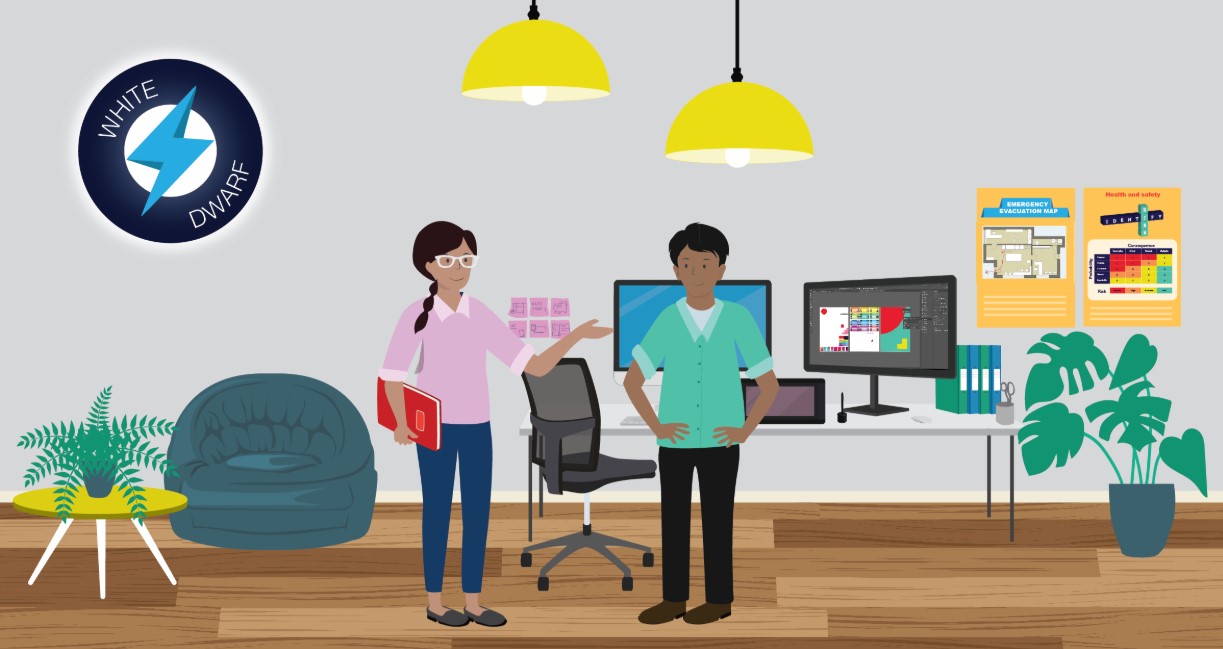Earlier in the year the Vocational Education Design Team (VEDT) were given the challenge to create two courses with an extraordinarily short timeframe of just eight weeks. To meet the challenge, VEDT pulled out a few tricks to get both courses finished on time.
To kick things off, VEDT held a short design sprint session which helped to stimulate everyone’s creative ideas. From here, the best ideas were sorted to find ones that could be achieved within the timeframe, and the course content was planned out between VEDT and the Media and Communications School. The Media and Communications School created the assessments while VEDT designed and built the course content.
One of the main challenges was to make the courses engaging and interesting for students and not just a content dump into Canvas. To get around this, a simple narrative about a fictional workplace was created to give the student the experience of how the course content might be relevant in a real workplace.

The student participates as a character that has started their first day at a small design studio. Wulan the studio manager guides the student through the day and points the student to the policies and procedures that they need to learn in the virtual workplace scenario as well as in a real workplace. To quickly create the assets for this scenario, characters and a virtual workplace from a previous course that the VEDT team had created were pulled apart, had some new features added and pieced back together again.

Sally Safety created by Hye Young for the Sew Safely course plus some new features created by myself made up Wulan for the Media Comms course.
Another great short cut that reduced build time and uplifted the look of the course was the use of EMBLE. By using EMBLE, VEDT were able to quickly create sharp layouts and call-out cards with just a few clicks. The use of call-out cards directed students to useful external resources like guides for intellectual property and privacy from the Australian Government, as well as library resources.
H5P also proved to be a great tool to quickly build interactive activities like drag-and-drop and flip cards so students can check their knowledge as they make their way through the course.
Both courses were delivered on time and successfully passed the Quality Assurance (QA) process in time for them to be available for students to enrol at the start of second semester 2019.
Overall this was a great learning experience to fully understand the rapid design process and build, and to see what great results VEDT can achieve in a short period of time.